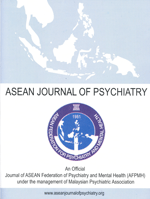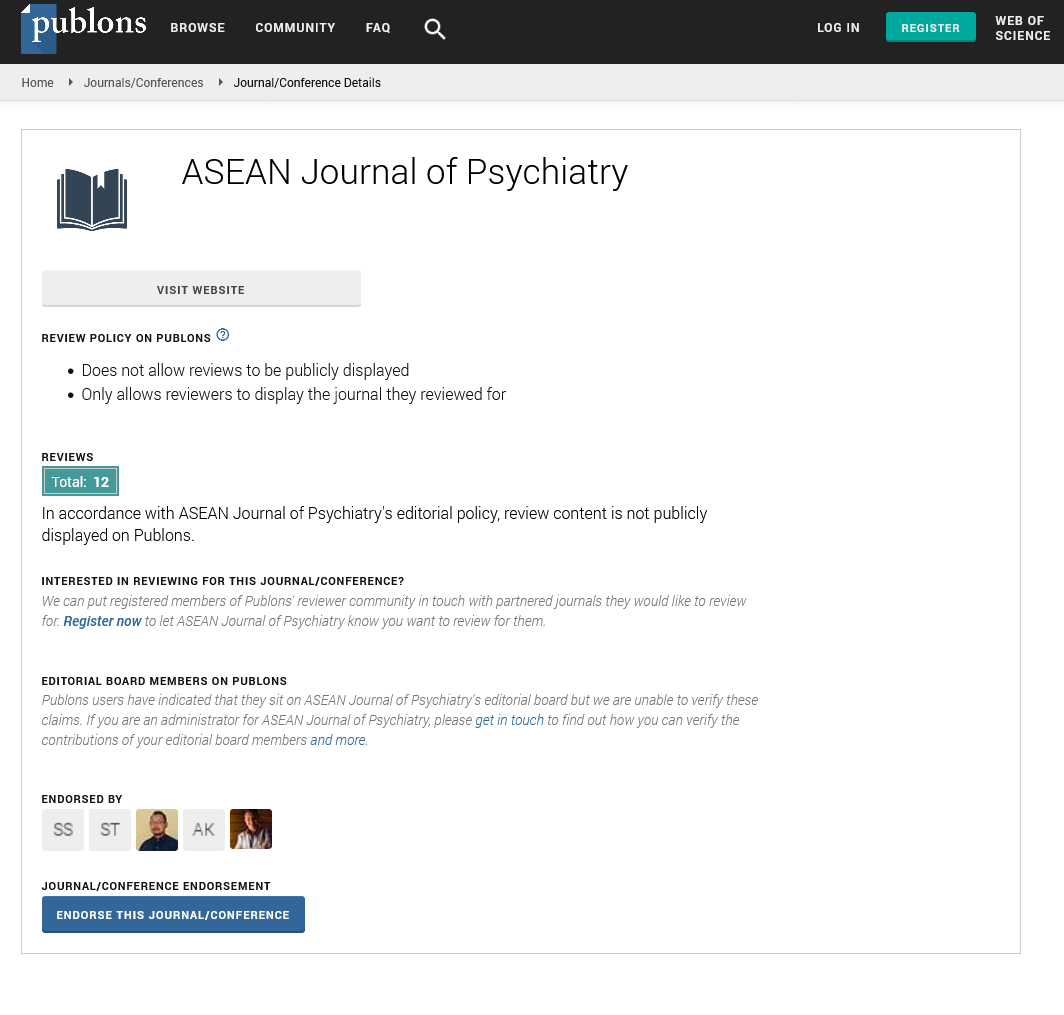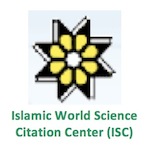


Google Scholar citation report
Citations : 5373
ASEAN Journal of Psychiatry received 5373 citations as per google scholar report
ASEAN Journal of Psychiatry peer review process verified at publons
| Journal Name | ASEAN Journal of Psychiatry (MyCite Report) | ||||
|---|---|---|---|---|---|
| Total Publications | 456 | ||||
| Total Citations | 5688 | ||||
| Total Non-self Citations | 12 | ||||
| Yearly Impact Factor | 0.93 | ||||
| 5-Year Impact Factor | 1.44 | ||||
| Immediacy Index | 0.1 | ||||
| Cited Half-life | 2.7 | ||||
| H-index | 30 | ||||
| Quartile |
|
- Anxiety Disorders
- Behavioural Science
- Biological Psychiatry
- Child and Adolescent Psychiatry
- Community Psychiatry
- Dementia
- Community Psychiatry
- Suicidal Behavior
- Social Psychiatry
- Psychiatry
- Psychiatry Diseases
- Psycho Trauma
- Posttraumatic Stress
- Psychiatric Symptoms
- Psychiatric Treatment
- Neurocognative Disorders (NCDs)
- Depression
- Mental Illness
- Neurological disorder
- Neurology
- Alzheimer's disease
- Parkinson's disease
Abstract
CYBER BULLYING - A NEW SOCIAL MENACE
Author(s): Cyber Bullying, Internet, Psychological, MultimediaObjective: Cyber bullying is a combination of the word cyber and bullying where cyber basically means the Internet or on-line. In this case, cyber bullying will focus on getting in action with bullying by using the Internet or modern technologies such as on-line chats, online media and short messaging texts through social media. The current review aims to compile and summarize the results of relevant publications related to “cyber bullying." The review also includes discussing on relevant variables related to cyber bullying. Methods: Information from relevant publications addresses the demographics, prevalence, differences between cyber bullying and traditional bullying, bullying motivation, avenues to overcome it, preventions, coping mechanisms in relation to “cyber bullying” were retrieved and summarized. Results: The prevalence of cyber bullying ranges from 30% - 55% and the contributing risk factors include positive association with perpetration, non-supportive school environment, and Internet risky behaviors. Both males and females have been equal weigh on being perpetrators and victims. The older groups with more technology exposures are more prone to be exposed to cyber bullying. With respect to individual components of bullying, repetition is less evident in cyber bullying and power imbalance is not measured by physicality but in terms of popularity and technical knowledge of the perpetrator. Conclusion: Due to the limited efforts centralized on the intervention, future researchers should focus on testing the efficacy of possible interventional programs and the effects of different roles in the intervention in order to curb the problem and prevent more deleterious effects of cyber bullying.
https://sporbahisleri.livejournal.com https://wakelet.com/@SporBahisleri67459 https://theomnibuzz.com/author/sporbahisleri/ https://lessons.drawspace.com/profile/322207/sporbahisleri/workflow https://writeupcafe.com/profile/sporbahisleri/ http://www.pearltrees.com/sporbahisleri https://pharmahub.org/members/26874/blog https://www.zupyak.com/u/Spor-Bahisleri/ https://www.metroflog.co/sporbahisleri https://www.fuzia.com/fz/spor-bahisleri https://tr.pinterest.com/sporbahislerim/ https://my.getjealous.com/sporbahisleri https://sporbahisleri.contently.com https://hubpages.com/@sporbahisleri https://www.tumblr.com/sporbahisleri https://hub.docker.com/u/sporbahislerim https://betsiteleri.blogfree.net https://betsiteleri.amebaownd.com https://sporbahisleri.pixnet.net/blog https://betsiteleri.seesaa.net https://betsiteleri.threadless.com https://betsiteleri.neocities.org https://bahissiteleri.localinfo.jp https://betsiteleri.shopinfo.jp https://teletype.in/@betsiteleri https://ubl.xml.org/users/sporbahisleri https://betsiteleri.educatorpages.com https://betsiteleri.onlc.fr https://sporbahisleri.gumroad.com


























